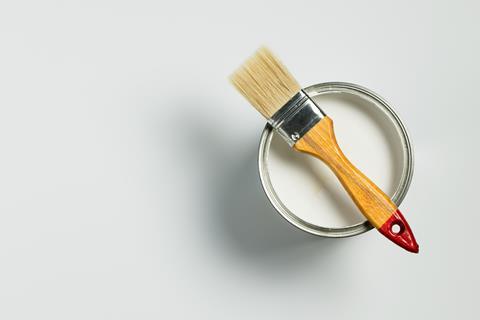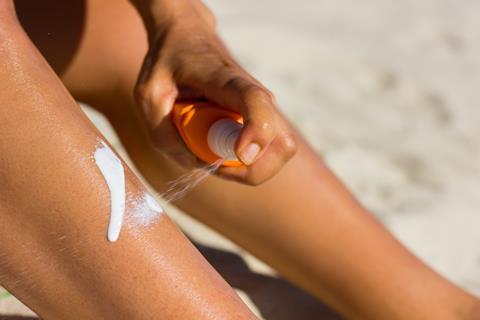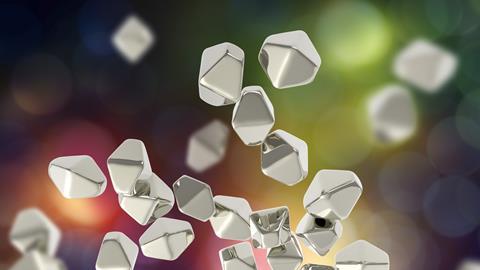Meera Senthilingam
This week, a compound that's a firm part of your life. And whether you realise it or not, it's brightening up all of our lives. Here's Phil Robinson:
Philip Robinson
You may not realise it but titanium dioxide is incredibly prolific - you probably encounter it every day in one or other of its many applications. 4 million tonnes of the stuff is produced globally each year and its bright white appearance and non-toxic properties mean it is used in a huge number of products ranging from paints and solar cells to sweets, toothpaste and medicine.
Titanium dioxide crystals are generally in one of two forms: rutile and anatase. The rutile form is more popular due to its higher stability and slightly better whitening abilities, while the anatase form is softer and less abrasive, and therefore popular for healthcare products and foods.
In both forms, titanium dioxide is best known for its whitening ability - making it by far the most widely used white pigment. It has a high refractive index, meaning it is exceptionally good at scattering light, and that gives it incredible whitening powers. In fact, its refractive index is only surpassed by diamond, so only relatively low levels are needed to make a material white.

Its largest use for whitening purposes is in paint - for industrial, domestic and artistic purposes. It is also a popular whitening agent in the food industry. Known as additive E171, it is found in foods such as icings, salad dressings and sweets. Titanium dioxide is also used in toothpaste - well, you wouldn't want to spread grey mush on your brush every morning and night would you? And the list goes on... correction fluid (such as Tipp-ex), road markings, fireworks, the white lines of the courts at Wimbledon, even tattoos.
It is perhaps ironic then that such a well known whitener should find its greatest cosmetic use in sunscreen - white is a shade sun worshippers are generally eager to shed! But here it is used for its so far unmatched ability to reflect, scatter and absorb harmful UV light - thus protecting the skin beneath it.
And this interaction with UV light leads to another valuable property - titanium dioxide is a photocatalyst. When it absorbs UV light, the energy causes reactive free radicals to be produced. In sunscreen, these must be captured by a layer of silica or alumina around the titanium dioxide particles because the radicals are potentially harmful to humans. But being a photocatalyst is a big bonus for many other applications, where these radicals can be put to good use.

They can, for example, break down organic dirt on all manner of surfaces. A flow of water - such as the rain - then washes the remnants away: earning the materials the title 'self-cleaning'.
A well known example of this is Pilkington's Activ self-cleaning glass, widely used for windows and conservatories. Add to the list stay-clean kitchen and bathroom tiles and you can see that titanium dioxide is every lazy housewife's (or indeed househusband's) dream!
And domestic life might be about to get even easier with the development of self-cleaning fabrics. In December 2011, a team of Chinese researchers announced a self-cleaning cotton containing titanium dioxide. The team stained the fabric with an orange dye, before exposing it to sunlight for two hours, after which time almost all of the stain was gone.
Meanwhile, a UK-based team are giving the term 'functionalised fabric' an eco twist by cleaning the air with clothing. Designer Helen Storey, in partnership with chemist Tony Ryan of the University of Sheffield, made a coating for fabrics that contains titanium dioxide nanoparticles. In the presence of sunlight, treated clothes will turn harmful nitrogen oxide gases into harmless nitrates. The team turned the eco-friendly fashion into an exhibit called Field of Jeans, a display consisting of pairs of treated jeans that toured cities around the UK, to rave reviews.
But this 'smog busting' isn't a new idea for titanium dioxide. There have been a number of air-purifying products in recent years launched for the building industry: including paints, cements and paving stones.

In May 2011, a titanium dioxide-based coating for aluminium cladding was unveiled by aluminium producer Alcoa. The company claim that a building with 1000 square metres of their coated aluminium will offset the smog caused by four cars every day, which they say is equivalent to the air cleansing power of 80 trees.
As well as killing smog, the free radicals produced when titanium dioxide is illuminated can be used to kill bacteria. In 2008 a team at Manchester Metropolitan University in the UK unveiled a titanium dioxide-based paint that could kill all the E. Coli on its surface under fluorescent lights - the lighting frequently used in hospitals.
And after it has cleaned our homes, the air, and even hospitals, titanium dioxide may also clean up our energy supply as it is a vital component of dye sensitised solar cells. These cells use an organic dye to collect the sun's energy - in much the same way as chlorophyll does in nature - and uses it to excite an electron from the dye into a titanium dioxide layer. The electron is then transported through the titanium dioxide to the electrode to create a current.
So, this all sound like titanium dioxide has a very rosy future. But as is often the way, this story has a sting in its tail. A victim of its own versatility, demand for titanium dioxide is outstripping the supply, so prices have rocketed - increasing by over 50% since 2008.
And with only vague plans in place to build new facilities in coming years, manufacturers are scrambling to try and figure out how to reduce the concentration of titanium dioxide in their products whilst still maintaining the same desirable properties. I guess only time will tell whether this white knight's fairytale is set to have a happy ending.
Meera Senthilingam
I guess only time will tell, but in the meantime be sure to appreciate the brightened up world around you. That was The RSC's Phil Robinson with the brightening and catalysing chemistry of titanium dioxide. Now, next week: the godfather of the explosives industry.
Peter Wothers
Nitroglycerine is probably best known for its explosive properties, but it is also one of the first substances used successfully to treat the heart problem angina. This heavy colourless oil was first prepared in 1847 by the Italian chemist Ascanio Sobrero who had worked under one of the pioneers in the chemistry of nitrocellulose, the French chemist Jules Pelouze. Sobrero called his new discovery pyroglycerine but was terrified of its explosive power and its extreme sensitivity, thinking it impossible to handle. But this substance proved to be exactly what was needed to turn around the fortunes of a Swedish family with a struggling explosives business.
Alfred Nobel was born in Stockholm in 1833 but when he was just five, his bankrupt father moved to St Petersburg in Russia to start a new company manufacturing explosives.
Meera Senthilingam
And to find out what makes the ocmpound nitroglycerine so explosive, and how its behaviour can be controlled to treat angina, join Pete Wothers in next week's Chemistry in it's element. Until then, thank you for listening. I'm Meera Senthilingam.













No comments yet